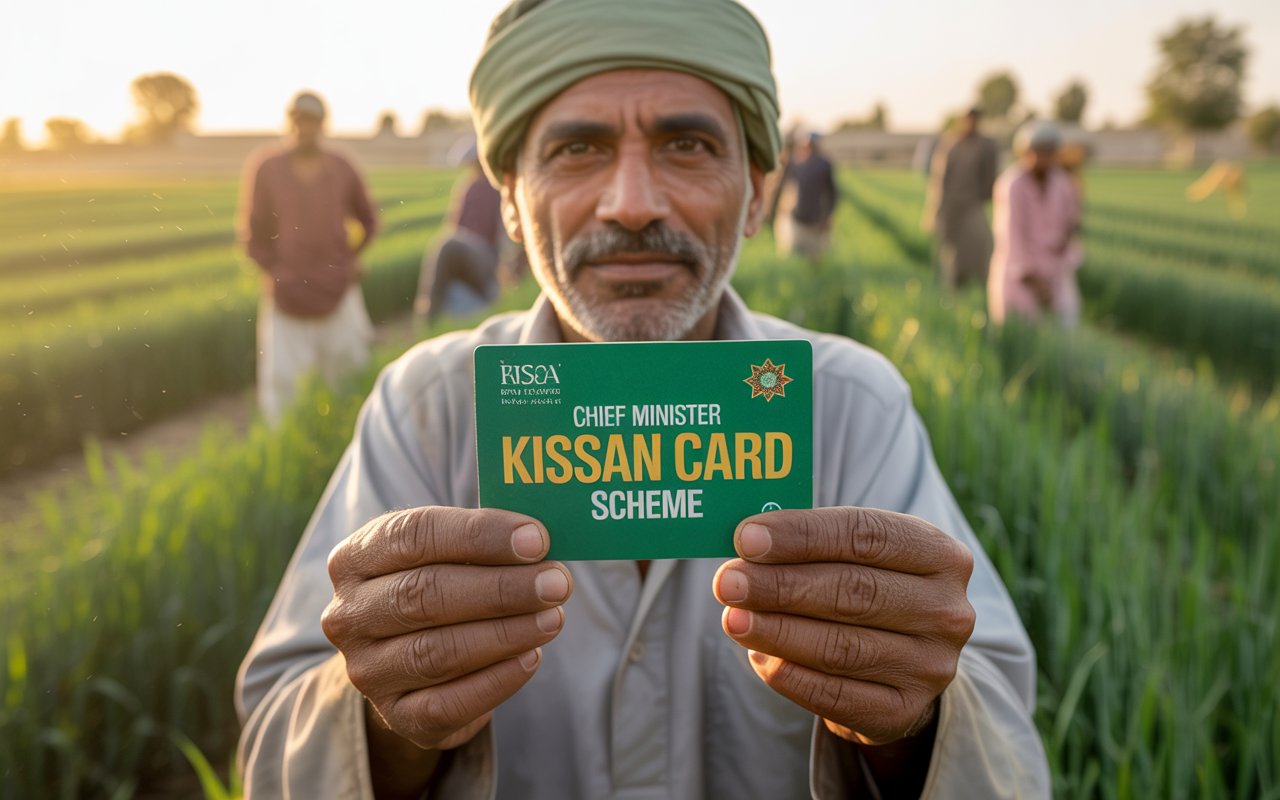Hey there, ever heard about the CM Punjab Free Pilot Scheme? It’s a fresh initiative announced by the Government of Punjab aimed at empowering youth from underprivileged backgrounds to pursue careers as professional pilots—without the heavy financial burden that usually comes with flight training.
The cost of becoming a pilot is notoriously steep. Most flying schools charge anywhere between ₹9,600 to ₹10,500 per hour for training YouTubePunjabXP. Add to that accommodation, medical checks, theory courses, and licence fees, and you’re easily looking at a total upwards of ₹25 lakh—far beyond the reach of most middle- and lower-income families PunjabXP.
But that’s where this scheme steps in—with funding assistance, subsidies, and structured support to help deserving candidates with the skills, qualifications, and passion for aviation.
Why the Scheme Matters
- Skyrocketing Costs of Pilot Training
These days, earning a Commercial Pilot Licence (CPL) is a luxury most can’t afford. A standard 200-hour course typically costs around ₹25 lakh—roughly ₹9,600 to ₹10,500 per flight hour PunjabXP. - Equal Opportunity for Underrepresented Groups
Historically, Scheduled Caste (SC) and low-income students have struggled to break into aviation due to these prohibitive costs. This scheme aims to dismantle that financial barrier by selecting eligible candidates and covering training costs in full PunjabXP+1haraviation.gov.in+1. - Boosting Punjab’s Aviation Sector & Workforce
Skilled pilots are always in demand—both in India and globally. By training local, deserving youth, Punjab stands to benefit from better employment outcomes and a stronger aviation workforce. - Aligns with Social Equity Goals
The scheme echoes broader government efforts to promote inclusivity by helping SC youth train for careers they’d otherwise be locked out of due to cost.
Who’s Eligible & How Funding Works
Eligibility Criteria (Based on SC‑Focused Welfare Scheme)
- Age: 18–25 years
- Education: 10+2 with Physics and Maths; graduation preferred The Express Tribune+2PunjabXP+2The Indian Express+2
- Income: Family income ≤ ₹2.5 lakh/year The Nation+4PunjabXP+4The Indian Express+4
- Background: Belong to Scheduled Castes (or other underprivileged groups as defined) PunjabXP
Selection Process
- Submit an application via state welfare or civil aviation department.
- Complete written tests and pilot aptitude screening.
- Clear medical fitness per DGCA standards.
- Undergo an interview with a dedicated selection committee Hindustan Times+2PunjabXP+2Facebook+2.
Funding Mechanics
- Government provides ₹25 lakh per selected trainee, paid directly to flying schools or clubs haraviation.gov.in+2PunjabXP+2Hindustan Times+2.
- Trainees must post a ₹1 lakh bank guarantee, refundable upon course completion PunjabXP.
- After earning their CPL, trainees commit to repay 50% (₹12.5 lakh) within a year, in 12 equal installments PunjabXP.
Scheme Benefits & Real-World Impact
- Financial Relief, Big Time
Imagine bypassing ₹25 lakh of upfront costs—this makes the dream of flying much more realistic for many families. - Accountability Through Payback
The 50% repayment ensures trainees are invested in the outcome and use their licence productively. - Direct Collaboration with Flying Clubs
Tying funds directly to training institutes eliminates misuse and ensures quality-focused spending. - Improves Diversity in Aviation
As more SC and low-income individuals enter the pilot profession, it helps create a more inclusive sector. - Potential Ripple Effects
- Job creation within aviation
- Motivational catalyst for other youth
- Enhances Punjab’s reputation in educational innovation
Frequently Asked Questions
Q: Which flying schools are part of this initiative?
A: The scheme partners with registered flying clubs nationally—your application form will allow you to select your preferred institute. Funds are routed directly to the school.
Q: Can anyone apply?
A: Not exactly. Primarily SC youth within the age and income brackets, who meet academic and medical criteria, may apply. Others from low-income backgrounds might be eligible depending on tailored categories.
Q: What if I don’t finish repayment?
A: The ₹1 lakh bank guarantee is held, and non-completion could affect your financial record. Talking to program administrators early is the best course of action.
Q: Is this a pilot project or full-blown scheme?
A: It launched as a pilot targeting four selected candidates from SC categories, but broader implementation is planned depending on success metrics PunjabXP+1haraviation.gov.in+1The Times of India+2Hindustan Times+2The Indian Express+2.
Q: When & how will I find out if I’m selected?
A: Expect formal notification via the welfare/civil aviation department. Successful candidates will be summoned for medicals and financial verification.
Challenges & What Lies Ahead
- Limited Single-Scheme Slots
The first wave covered just four SC candidates. That’s tiny—so future expansions are necessary for real impact PunjabXP+1haraviation.gov.in+1The Indian Express. - Infrastructure Bottlenecks
Punjab’s own flying institute lifeline is limited; partnerships with out-of-state clubs might be needed, raising travel or relocation costs. - Administrative Oversight Needed
Proper fund disbursement, trainee tracking, and repayment collection require smart management systems. - Post‑Training Placement Options
Post-CPL, access to jobs is key. Placement drives, linkages with airlines, or bank-sponsored internships could help bridge this gap.
Comparing to Other Schemes
Punjab isn’t the only place experimenting with aviation aid. In Haryana, for instance, concessional flying quotas and scholarships are extended to women and SC/ST candidates—though these focus on private pilot licences (PPL) and earlier training stages The Express Tribune+2The Indian Express+2The Times of India+2haraviation.gov.in. Punjab’s scheme stands out because it funds the full cost of obtaining a CPL, making it a higher-stakes investment in professional training.
Voices from the Pilot Community
A few trainees who’ve benefited in beta rounds say:
“Honestly, ₹25 lakh feels like an impossible mountain. This help leveled the playing field.”
“I’m committed to repaying my dues—this isn’t a free ride. It was encouragement, not hand‑out.”
Their comments reveal genuine gratitude and a practical mindset—reminders that schemes like this can transform lives if executed right.
What Needs to Happen Next
- Expand the Pilot: Move from 4 selected candidates to 20 or 50 per year.
- Build Local Training Hubs: Strengthen or build flying schools in Punjab to avoid external dependencies.
- Ensure Post‑Licence Jobs: Create tie-ups with airlines, charter companies, or state-run civil aviation roles.
- Monitor Repayment & Outcomes: Enforce the payback clause while tracking pilot job placements and success stories.
- Sustain & Scale Funding: Make this a regular feature of the state’s social-welfare budget.
Case Study: SC Youth Flying Grant
In 2014–15, Punjab’s welfare department earmarked ₹1 crore (4 × ₹25 lakh) to support SC youth training for CPLs PunjabXP. Selected candidates paid ₹1 lakh as guarantee, passed aptitude and medical exams, and bonded with the state—agreeing to repay half the funding after getting licensed, within a year PunjabXP.
That pilot revealed how administrative clarity and financial safeguards can make subsidy programs work practically—though success hinged on student performance and repayment compliance.
Conclusion
The CM Punjab Free Pilot Scheme is a bold, commendable strategy—lifting financial barriers for determined youngsters aiming for skies. It merges thoughtful funding with responsible repayment, inclusive eligibility, and the potential to grow Punjab’s aerospace reputation.
But success won’t come automatically. Punjab needs to scale up, invest in infrastructure, ensure pipeline jobs, and track trainee outcomes. With these levers in motion, this could become a model initiative—not just within India’s states, but globally—for socially inclusive, merit-driven professional training.
In short, the sky’s the limit—but only if Punjab builds the runway properly. Pilots of tomorrow are watching.



